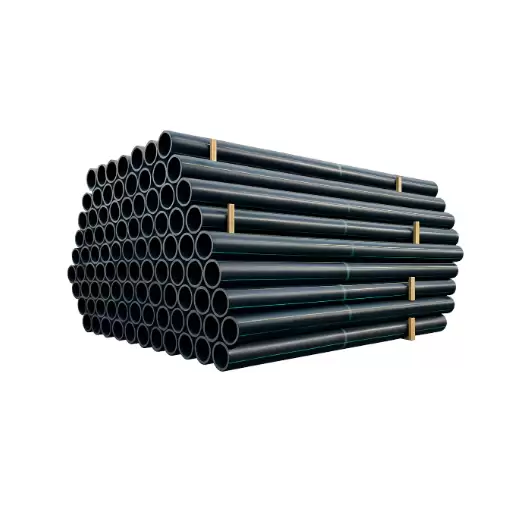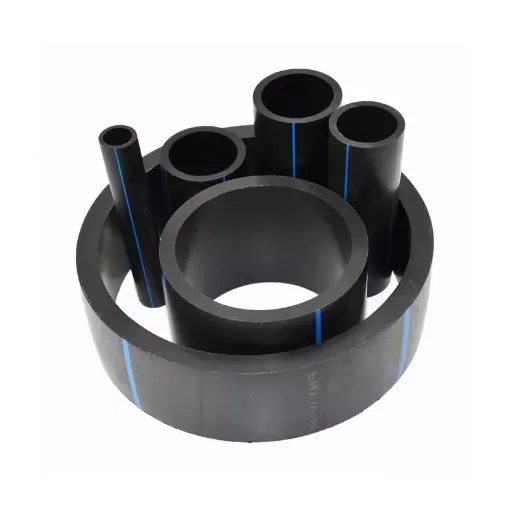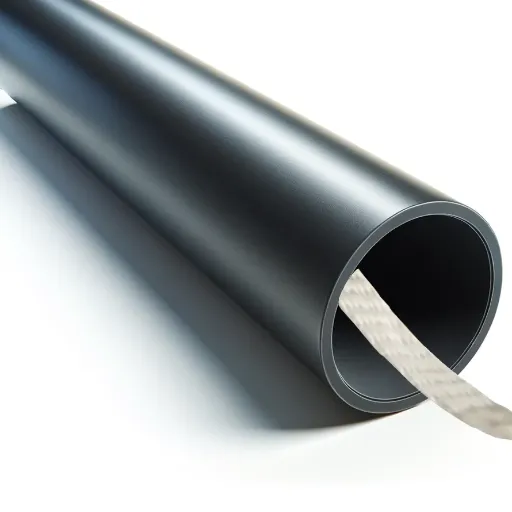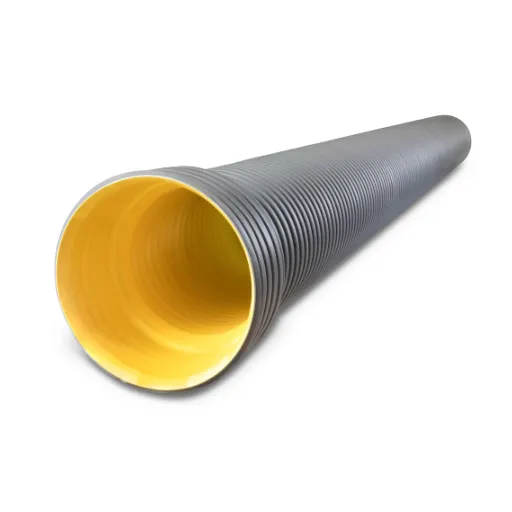High-Density Polyethylene (HDPE) pipes have revolutionized the infrastructure and piping industries with their unmatched durability, flexibility, and efficiency. Among the various classifications, DR9 HDPE pipe stands out as a robust, high-performance solution designed to meet the demands of high-pressure applications. But what exactly sets DR9 HDPE pipes apart, and why are they preferred in critical operations ranging from potable water systems to industrial fluid transport? This article will explore the technical specifications and versatile applications of DR9 HDPE pipes, providing readers with a clear understanding of their unparalleled reliability and performance. Whether you’re a project engineer, a contractor, or simply someone eager to learn about advanced piping technologies, this guide will deliver the insight you need to make informed decisions.
Introduction to HDPE Pipe
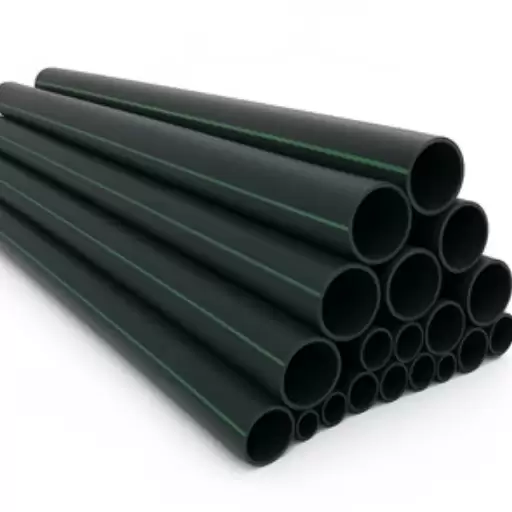
What is HDPE?
HDPE is a thermoplastic polymer with applications in many areas because of its good strength-to-density ratio, flexibility, and corrosion resistance. It is generally derived from petroleum through polymerization, which forms a strong molecular organization tempered by the properties of being light and durable. These fascinating properties enable HDPE to sustain high pressures and environmental stresses, making it a fine contender for piping systems, containers, and industrial parts.
However, its chemical resistance is the striking feature of HDPE. It is inert to most acids, bases, and industrial or home chemicals, thus enabling it to perform forever, with degradation occurring not being considered much of a possibility. This polymer is also highly resistant to impact and remains stable well within a wide temperature range, making it a dependable material in aggressive environments, both underground and in exposed outdoor implementations.
In addition, HDPE has an environmental advantage. It is recyclable, hence protecting the environment by reducing waste and supporting the circular reuse of materials in manufacturing. Unlike alternatives such as metals, HDPE pipelines do not rust or corrode, prolonging the pipeline’s lifespan and curtailing maintenance requirements. Combining this with its ease of installation and its capacity to form leak-free joints via fusion welding renders HDPE a truly modern technical finishing, both for industrial and municipal applications.
Overview of Pipe Types
Pipelines are used to transport different materials in liquid and gaseous states and hence must have a type that fits the performance, durability, and cost requirements. The main types of pipelines include steel, HDPE (High-Density Polyethylene), and PVC (Polyvinyl Chloride), each having different traits depending on which applications it may be suited for.
Steel pipes are highly valued for their superior pressure tolerance, strength, and adverse temperature conditions they may be exposed to during carrying out their functions. Classified as temperature and load-class steel pipelines for oil, gas, and industrial applications, they cannot be used where corrosion is to be expected unless proper coating is applied to prevent corrosion. Due to its weight and rigidity, transportation of steel pipes is costly, and similarly, installation thereof can be difficult.
In contrast, HDPE pipes are lightweight and corrosion-resistant. They have a very long life span in water distribution and wastewater systems, with joints that do not leak. Also, they have huge flexibility, which allows their installation in terrains that pose considerable problems, or that are geotechnically unstable, including the seismic zones.
PVC pipes are extensively used in low-pressure applications like residential water supply and sewerage systems. Lightweight, cheap, and easy to work with, they, however, cannot stand as much pressure or harsh environmental conditions as steel or HDPE.
Deciding upon the particular type of pipe is therefore based on functional requirement, environmental condition, and cost. Hence, one has to carefully weigh the properties of the material against the requirements of the particular project at hand.
Importance of Polyethylene in Infrastructure
The physical, material, and economic characteristics of polyethylene, especially HDPE, result in its utilization in infrastructure development. In these systems, it finds uses in water distribution, gas pipelines, and cable protection conduits. Polyethylene’s chemical structure renders it very corrosion resistant in nature, chemically resistant, and resistant to environmental stress cracking, thus suitable for long-term use under an adverse environment. Such properties assure higher system reliability of infrastructure and lower maintenance or replacement costs.
With regard to transport and installation, polyethylene offers a great advantage due to its flexibility and lightweight. In some cases, HDPE pipes can be butt-joined together as a homogenous system free of leakage. This restricts the possibility of water loss, gas leaks, or contamination through the joints acting as vulnerable points in conventional joint systems, which in turn brings about higher efficiency of the overall system. Its capability to work against temperature fluctuations also allows it to be used in varying climates, and withstanding high internal pressures gives it another claim to versatility in operational requirements.
Polyethylene is considered eco-friendly in infrastructure because it is recyclable. Most polyethylene products can be recycled and melted down for reuse, minimizing long-term waste and environmental implications. Besides, durability and long life of polyethylene mean less frequent replacements and less material consumption. Penetrating infrastructure resilience further into this concept brings in polyethylene and hence illustrates its alignment with modern environmental paradigms. Hence, these factors further illustrate the pivotal role that this polymer plays in the construction of efficient, durable, and environmentally compatible infrastructure systems.
Understanding DR9 Specifications
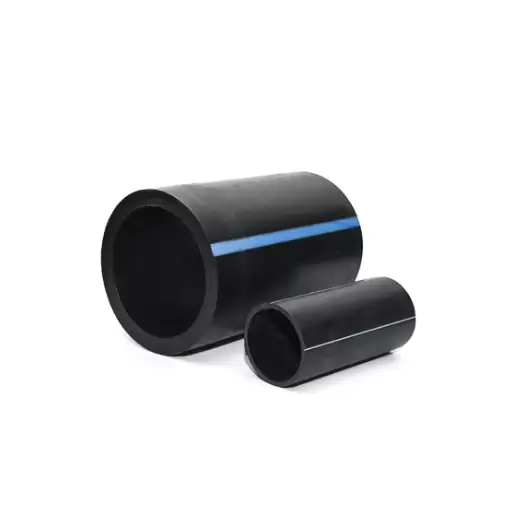
Definition of DR9
Dimension Ratio 9, or simply DR9, is of utmost importance in the design and manufacturing of polyethylene pipes for applications including infrastructure for water distribution and gas transport. “Dimension Ratio” is the relationship between the outer diameter of a pipe and the thickness of its wall, thereby determining the ability of the pipe to stand up to pressure. In effect, DR9 indicates that the pipe has a nine-to-one ratio of outer diameter to wall the pipe has a strong structure for the transport of high-pressure fluids. This specification ensures that the pipes fit the rigorous performance standards, both in terms of structural integrity and in terms of reliability placed on them under extreme working conditions.
The use of DR9 polyethylene pipes arises out of the realization that it interrelates flexibility with strength. DR9 pipes possess thicker walls, making them able to sustain much higher internal pressures compared to pipes with higher dimension ratios like DR11 or DR17. Hence, DR9 pipes are good in any circumstance where higher pressure is anticipated, such as municipal water works, industrial fluid transfers, or high-pressure gas lines. DR9 pipes also stand mighty against various outside stresses, such as soil-loading stresses and mechanical impacts, thus broadening their apprehension over a variety of infrastructure projects.
Industry studies have often shown DR9 pipes to have certain advantages over being evaluated as normal steel or copper pipes: The greater corrosion resistance, in addition to higher chemical inertness, combine to afford the DR9 pipe system with a longer operational life and negligible maintenance. With DR9 incorporated in polyethylene pipe systems, sustainability is ensured due to decreased leakage rates, so that there is efficient utilization of resources, thereby conserving water and energy resources-especially in today’s circumstance where the enhancement of green energy is targeted. Thus, downplaying performance and environmental issues with DR9-rated systems proves to be in itself a solution toward modern infrastructure problems, hence bearing great meaning for engineering efficiency and long-term reliability.
Pressure Ratings and PSI
Pressure levels form an essential parameter while assessing and using polyethylene pipe systems since they are related to the maximum operating pressure that a pipe can withstand. Usually given in pounds per square inch (PSI), pressure ratings are determined by the strength of the material, wall thickness, and design safety factors. For instance, DR9 polyethylene pipes have a higher wall thickness ratio, allowing them to resist pressure loads more efficiently than those with other dimensional ratios.
The pressure rating for a DR9 system is about 200 PSI at 73°F, which is the standard temperature for calculating thermoplast properties of melting. However, the temperature change should be taken into account because with the temperature rise, the effective pressure rating of the pipe decreases. Above 73°F of ambient temperature, the pressure rating of polyethylene piping reduces. Such of situation demands a temperature de-rating analysis for extreme cases.
In addition to temperature, certain operational variables also influence the long-term performance of the piping system, e.g., sustained pressures inside the pipe, short-term spikes in such pressures, and cycles of fluctuating pressure. This account of these factors and the workings of the system conforms with industry standards, including ASTM and ISO guidelines, thereby fostering the safe and efficient use of DR9-rated polyethylene systems in various applications in water distribution, gas transmission, and other critical infrastructures.
Applications of DR9 HDPE Pipe
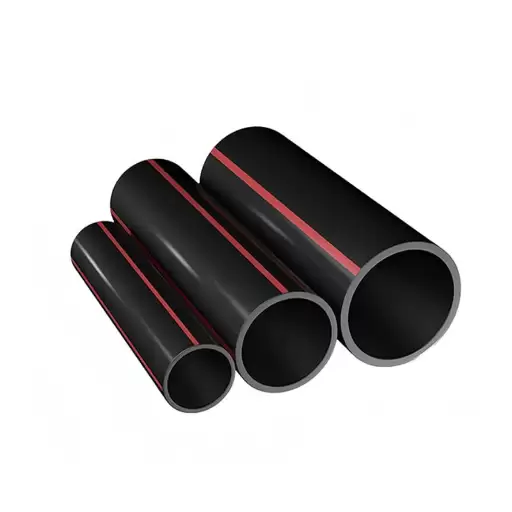
Water Supply Systems
DR9 HDPE pipes are an essential component of water supply systems today, requiring their high degree of strength and flexibility with corrosion resistance. These pipes have been designed to withstand high pressure and exhibit long performance under different operating conditions. Environmental stresses like freeze-thaw cycles or slight ground movements, if any, might erode such systems with time, questioning their secondary water supply reliability.
Polyethylene material being inert eliminates any possibility of leaching or contamination, thus making it paramount to use in potable water systems. Industry sources indicate that DR9 pipes have a life expectancy ranging between 50-100 years, if installed properly, thus reducing costs for maintenance or replacement. Anyhow, the smooth internal surface minimizes friction losses, thereby enhancing water transportation hydraulic performance and energy efficiency.
DR9 HDPE pipeline installations have been proven cost-effective in megascale municipal projects. These pipes are being extensively integrated into water supply networks in both urban and rural settings, as they can be easily tied to the existing infrastructure, providing scalable solutions for enhancing water supply capacities while conforming to stringent regulatory standards.
Wastewater Management
An effective wastewater management system proves pivotal to the sustenance of environmental and public health. Modernized treatment systems use cutting-edge techniques such as membrane bioreactors (MBRs), anaerobic digestion, and chemical coagulation to bring wastewater to ever-increasing levels of quality. The mechanism aims at stripping away biological pollutants, heavy metals, and other contaminants from influent water, so that it can then be safely discharged or reused.
A major theme in wastewater treatment today is resource recovery. Biogas capture at anaerobic treatment plants and subsequent generation of renewable energy is one method of reducing operational costs. Phosphorus and nitrogen may be recovered and used in agricultural fertilizers through nutrient recovery technology, thus promoting a circular economy. These new technologies are believed to enhance treatment performance while contributing to the reduction of greenhouse gas emissions emanating from conventional treatment processes.
As urbanization and industrial activities are projected to boost the quantities of wastewater worldwide, which calls for solutions that are scalable and cost-effective, the increasing number of computational tools, such as those based on GIS and IoT-enabled sensors, enables real-time monitoring for optimization and predictive maintenance of the systems. The combined approach ensures adherence to the dynamic regulatory environments while solving highly technical problems formed by contemporary wastewater management systems.
Industrial Uses
Water uses must be controlled and managed effectively in treatment plants for the industries to comply with environmental regulations and optimize the use of resources. For example, these plants generate large volumes of wastewater with organic, inorganic, and possibly hazardous substances. Therefore, treatment systems such as membrane bioreactors (MBR), anaerobic digestion, and advanced oxidation process (AOP) are being intensively applied to satisfy advanced standard requirements of discharge.
GIS and IoT-enabled sensors optimize plant operations. These support the provision of geospatial data combined with real-time analytics to consider bottlenecks in wastewater flows in industries and use predictive maintenance strategies to foster enhanced system reliability. For example, industries using IoT-based monitoring can detect any very unusual activities, such as a leak or sudden spike in contamination levels, thereby trapping such issues into immediate corrective action and reducing downtime.
Emerging data further underscore the importance of employing circular economy principles in industrial wastewater management. Treated water reuse for industrial cooling, cleaning, or irrigation purposes lessens dependency on freshwater and waste generation. Extracting byproducts such as biogas or valuable raw materials (e.g., phosphates) from wastewater further sustains operations. These technological advances not only revive the contrary-engineering inability status of the environment but also provide economic value in the long term through a reduction in operational expenses, thereby facilitating compliance with global environmental standards.
Installation and Maintenance

Installation Guidelines for HDPE Pipe
Proper installation of HDPE (High-Density Polyethylene) piping systems is vital concerning their performance and durability, potentially affecting their longevity. The following guidelines detail the best installation steps and practices to be followed:
- Trench Preparation: The trench should have a uniform depth with a flat and stable bottom. The minimum width should be 1.5 times that of the pipe diameter to allow sufficient room for backfilling and compaction. Remove any sharp objects, rocks, or debris that may damage the pipe surface.
- Pipe Handling and Storage: During transport and storage, the package should not be exposed to excessive heat, direct sunlight (to prevent degradation by UV radiation), or mechanical stress. Use equipment suitable for the weight and size of the pipe to ensure it does not become deformed during handling.
- Joining Methods: HDPE pipelines can be joined through heat-fusion methods such as butt fusion, electrofusion, or socket fusion. The manufacturer’s instructions should be closely followed regarding time, temperature, pressure, and cooling duration. The weld should then be tested and verified for integrity using an X-ray, pressure test, or another appropriate check.
- Bedding and Backfilling: Provide a bedding of granular materials or sands at the trench bottom at a thickness of not less than 4 inches. Backfill the trench with materials up to a designated height. Properly compact the backfill to support the pipe and prevent its displacement; large stones or sharp materials that might abrade the pipe should not be used.
- Pressure Testing and Inspection: The construction should be pressure-tested hydrostatically to locate any leakage points or weaknesses in the pipeline. Reference should be made to local and international standards for minimum pressures that should be accepted and the lengths of tests. Any defects observed should be recorded, addressed, and rectified before the system commissioning.
- Thermal Stress Considerations: HDPE piping experiences greater expansion and contraction due to temperature changes compared to other materials. Provision should therefore be made for sufficient flexibility in the pipeline layout by way of expansion loops, flexible joints, and properly anchored points.
Following these detailed guidelines will ensure that HDPE pipe systems meet their expected operational life and lessen the possibility of failure during operation. Proper installation will greatly increase any pipeline’s longevity and ensure safety, efficiency, and conformity to the set standards of the industry.
Long-term Maintenance Practices
Long-term reliability of HDPE pipe systems can be achieved through structured maintenance practices that follow the best industry practices and standards. To begin with, an inspection procedure should be established to include visual checks for surface deformities, cracks, or warping due to external pressures or UV exposure. Ultrasonic or acoustic methods can also be used to detect internal wall thinning or voids that are otherwise not visible.
The pipes should be periodically cleaned to prevent the build-up of sediments or debris, which can be done both mechanically and with hydraulic flushing. Flow rate monitoring should also be included during maintenance activities to uncover any potential blockages or reductions in performance.
Recording of all inspection and maintenance activities in a centralized tracking system must be maintained. This will help in carrying out any trend analysis and also ensure compliance with continuously evolving regulatory standards. Technology in pipeline monitoring has made leaps and bounds, and so sensors enabled with IoT can further support a predictive maintenance strategy by providing real-time data regarding pipeline performance, environmental conditions, and potential points of wear. A proactive maintenance approach will go a long way in increasing the lifespan of HDPE pipe systems while significantly reducing the likelihood of costly failures.
Benefits of Using DR9 HDPE Pipe
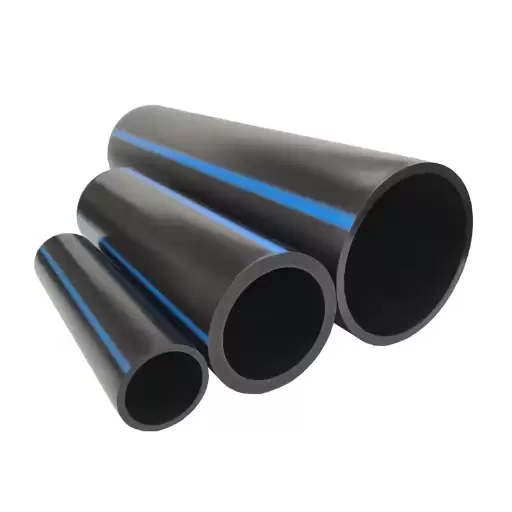
Durability and Longevity
The inherent properties of DR9 HDPE pipe make it exceptional in applications that demand durability and long operational life. Resistance to corrosion, chemical action, and environmental stress cracking is superior in DR9 HDPE pipes as compared to traditional materials like steel or concrete. This resistance comes from the fact that the HDPE material has a strong molecular structure capable of withstanding prolonged exposure to harsh chemicals and varying environmental conditions without compromise.
DR9 HDPE pipes retain their structural integrity in high-pressure applications. From lab and field tests, one finds that a properly installed and maintained DR9 HDPE pipe can sustain its performance characteristics for 50 to even 100 years. Low creep deformation characteristics of HDPE and its flexibility contribute to a situation where the pipe maintains the shape and functionality even when soil conditions change dynamically, thus qualifying it as a reliable material for infrastructure works.
Moreover, the DR9 HDPE pipe has a further advantage of resisting fatigue and cyclic loading, hence fitting into systems susceptible to repetitive pressure changes, such as water distribution systems and industrial pipelines. Such endurance greatly minimizes failure risk due to fatigue of the material, thereby contributing to reduced maintenance costs and downtimes throughout the working life of the system. By its robustness, DR9 HDPE bidding not only extends the life of the installation but also forms a very cost-effective and sustainable solution for long-term infrastructure planning.
Cost-Effectiveness
The competitive edge and price appeal of DR9 HDPE pressure piping systems are products of the properties imparting Great Durability, whereby enhancement of the maintenance-free factor and long service life is attributed. The HDPE systems have fewer incidents of corrosion and leakages compared to steel or concrete systems; therefore, there are comparatively low costs of repair and replacement. Also, due to the light nature of the HDPE pipes, less weight translates to less transportation and installation cost because another system requiring much work and special equipment is not needed.
Research and industry data favorably assert that from the time of installing a water and energy-efficient HDPE piping system, there is a saving. For instance, friction loss is minimized because of the smooth internal surface of HDPE pipe; accordingly, fluid flows with reduced energy demand on pumping systems. Sometimes, energy costs are lowered by 30% where HDPE is applied. Moreover, it has a fairly good resistance to adverse environmental conditions such as sudden temperature variations and chemical exposure, thus reducing unplanned interventions and mitigations against disruptions in operations.
Evaluated holistically, DR9 HDPE piping systems afford industries an attractive avenue toward strategically balancing capital and operational expenses in observance of sustainability avenues. Performance benefits tied to reduced environmental impact affirm them as an infrastructure option with an eye on tomorrow.
Environmental Impact
The efficacy and durability are evaluated with environmental sustainability as the major focal point for DR9 HDPE piping systems. These systems are designed with the conscious efforts of reducing an ecological footprint through lower energy requirements for production as compared to traditional piping materials, such as steel or concrete. Recent studies show that manufacturing HDPE pipes emits up to 60% fewer greenhouse gas emissions, which further affirms their existence as an environmentally conscious alternative. Moreover, due to its long service life, the DR9 HDPE system undergoes less frequent instances of replacement, thereby minimizing waste generation and overall consumption of material.
Another interesting aspect of DR9 HDPE piping systems is their recyclability. Since these materials are thermoplastics, they may be melted and again formed into piping without affecting strength and performance capabilities. Such an intrinsically circular characteristic perfectly lends itself to the sustainable economy concept, therefore offering the value that end-of-life piping systems can be recycled back into the production stream. On another note, low susceptibility to chemical degradation renders these pipes fairly safe for the environment in case of system failure, further endorsing their green credentials.
Field application data also reveal a great diminution of environmental disruption during installation and repair. HDPE pipes, lightweight in nature, do not require highly energy-intensive equipment for transportation and installation. Advanced trenchless installation methods compatible with HDPE significantly reduce environmental damage generally incurred during large-scale excavations. The resultant environmental advantages thus put the DR9 HDPE piping system in a position to lead the way as a solution for industries trying to reduce their environmental impact without sacrificing operational efficiency.
References
Frequently Asked Questions (FAQ)
Q: What is DR9 HDPE pipe, and what are its specifications?
A: DR9 HDPE pipe is a high-density polyethylene pipe characterized by a specific dimension ratio (DR) of 9. This means that the outside diameter of the pipe is 9 times the nominal wall thickness. It is designed to handle pressures up to 250 psi, making it suitable for various applications, including water distribution and irrigation.
Q: What is the significance of the inside diameter of DR9 HDPE pipe?
A: The inside diameter of DR9 HDPE pipe is crucial for determining the flow capacity of the pipe. A larger inside diameter allows for a greater volume of fluid to pass through, which is essential for efficient plumbing and irrigation systems. The inside diameter can be calculated based on the outside diameter and the nominal thickness of the pipe wall.
Q: How does the high strength-to-density ratio of HDPE affect its usage?
A: The high strength-to-density ratio of HDPE makes it a popular choice for pipe applications. This property allows for thinner walls without compromising strength, which reduces material usage and costs. HDPE is used extensively in various industries, including construction and municipal applications, due to its lightweight yet durable nature.
Q: What are the different pipe sizes available for DR9 HDPE?
A: DR9 HDPE pipe is available in various sizes to meet different application needs. The pipe sizes are typically categorized by their outside diameter and nominal diameter. Common sizes include those compatible with copper tube size (CTS) and ductile iron pipe sizes (DIP), ensuring compatibility with existing infrastructure.
Q: What is the role of ASTM F714 in the context of HDPE pipes?
A: ASTM F714 is a standard specification that outlines the requirements for HDPE pipes used in municipal and industrial applications. This certification ensures that the pipes, including DR9 HDPE, meet specific quality and performance criteria, such as UV resistance and moisture resistance, making them reliable for long-term use.
Q: How can the HDPE pipe chart assist in selecting the right pipe?
A: The HDPE pipe chart provides essential information on the various sizes, dimensions, and pressure ratings of HDPE pipes, including DR9. By referencing this chart, users can easily compare the outside diameter, inside diameter, and SDRs (Standard Dimension Ratios) to select the appropriate pipe for their specific application.
Q: What are the benefits of using HDPE over ductile iron pipes?
A: HDPE offers several advantages over ductile iron pipes, including a lower weight, which eases installation and reduces transportation costs. Additionally, HDPE pipes are resistant to corrosion and require less maintenance than ductile iron pipes. Their flexibility allows them to handle occasional surges in pressure without failure.
Q: How does moisture impact the performance of HDPE pipes?
A: Moisture can affect the performance of HDPE pipes in terms of adhesion and connection integrity. However, HDPE pipes are designed to resist moisture-related issues, making them suitable for underground applications. Proper installation techniques ensure that moisture does not compromise the pipe’s structural integrity.
Q: What is the importance of third-party certification for HDPE pipes?
A: Third-party certification of HDPE pipes ensures that the products meet industry standards and regulatory requirements. This certification provides confidence in the quality and performance of the pipes, making them a reliable choice for various applications, including those requiring high-pressure ratings such as 250 psi systems.
Q: How can one improve the strength of HDPE pipes?
A: The strength of HDPE pipes can be improved by selecting higher-grade materials, such as PE4710, which offers enhanced performance characteristics. Additionally, proper installation techniques and adherence to recommended SDRs can contribute to the overall durability and strength of the HDPE piping system.



